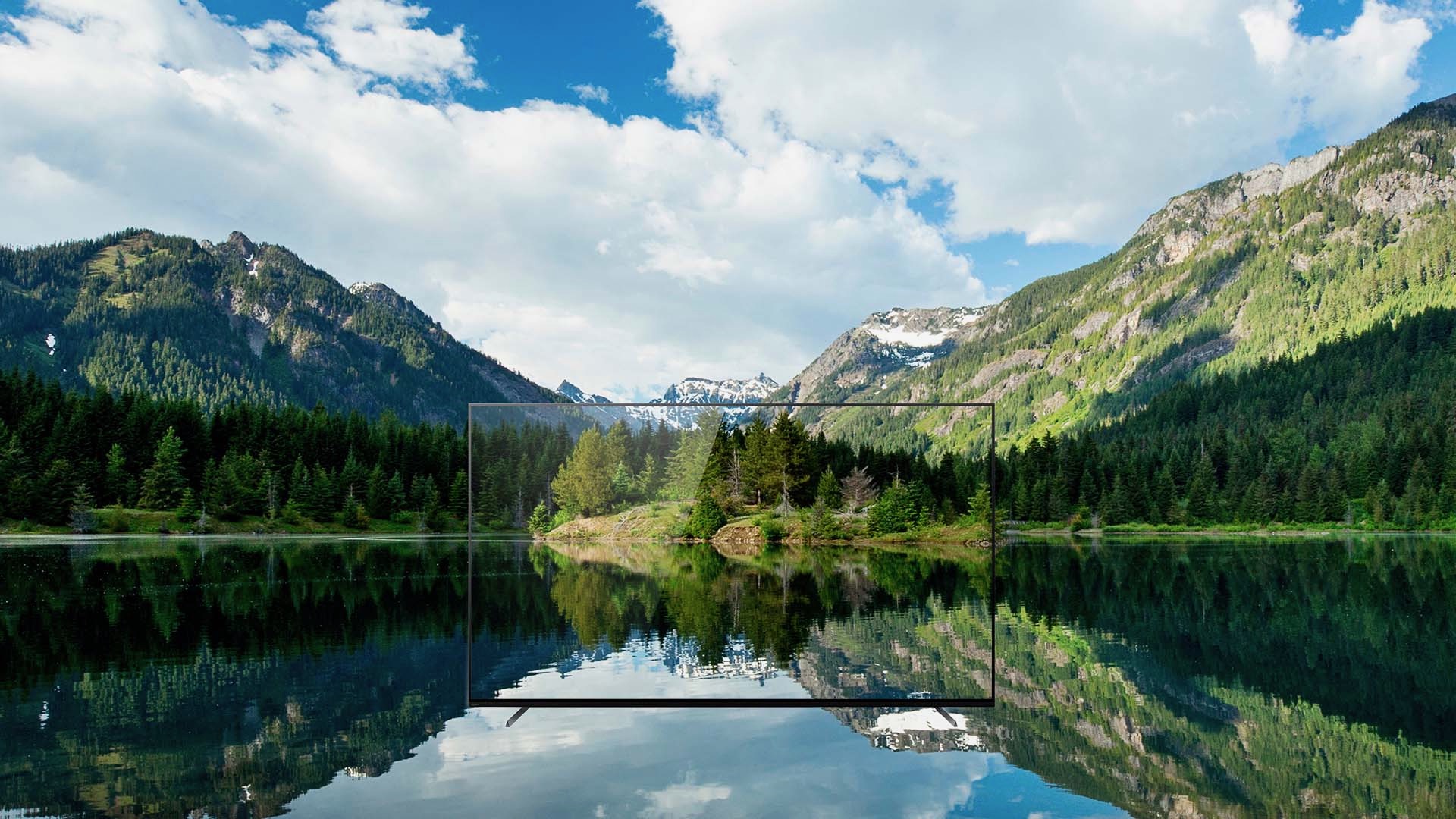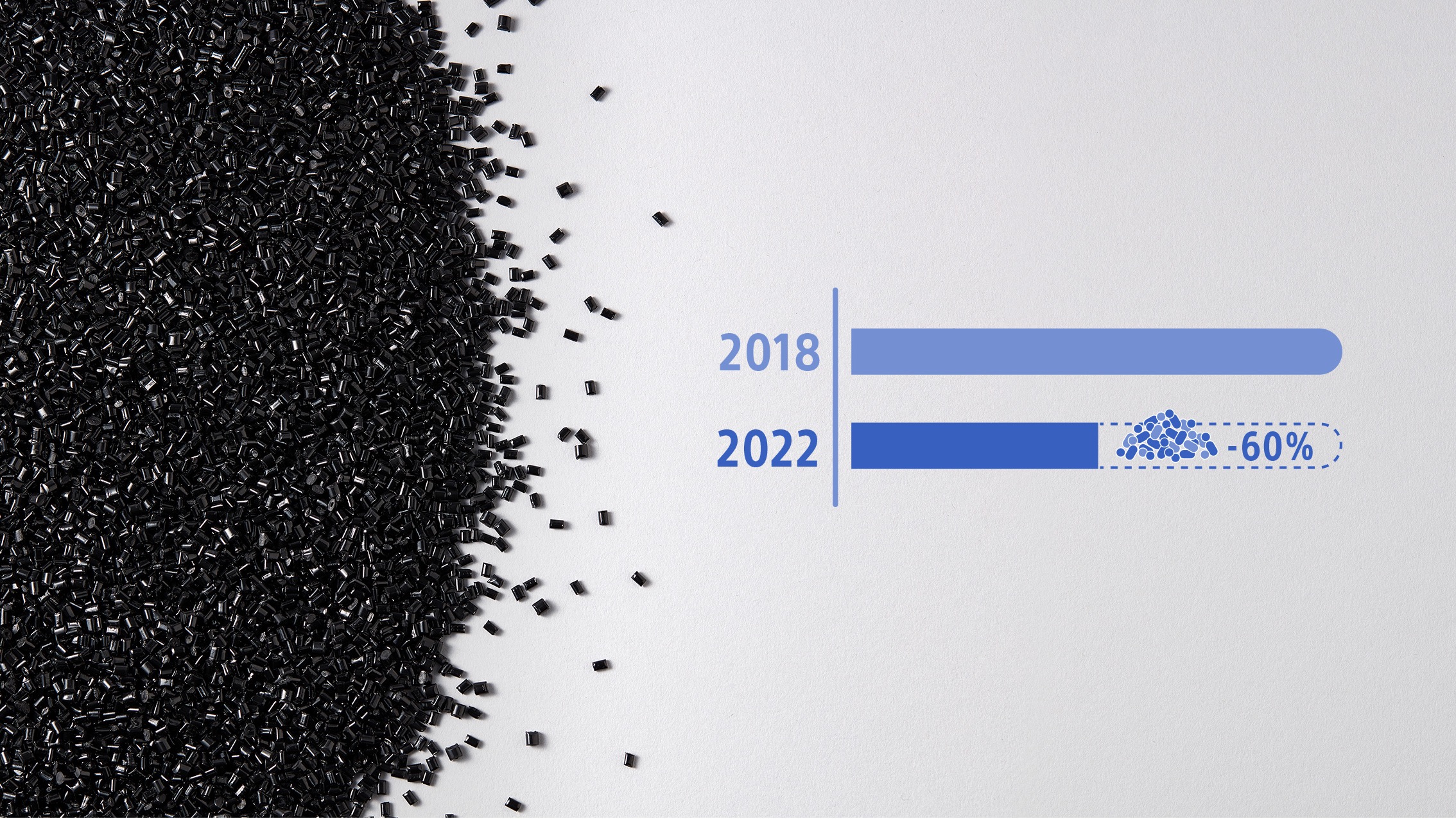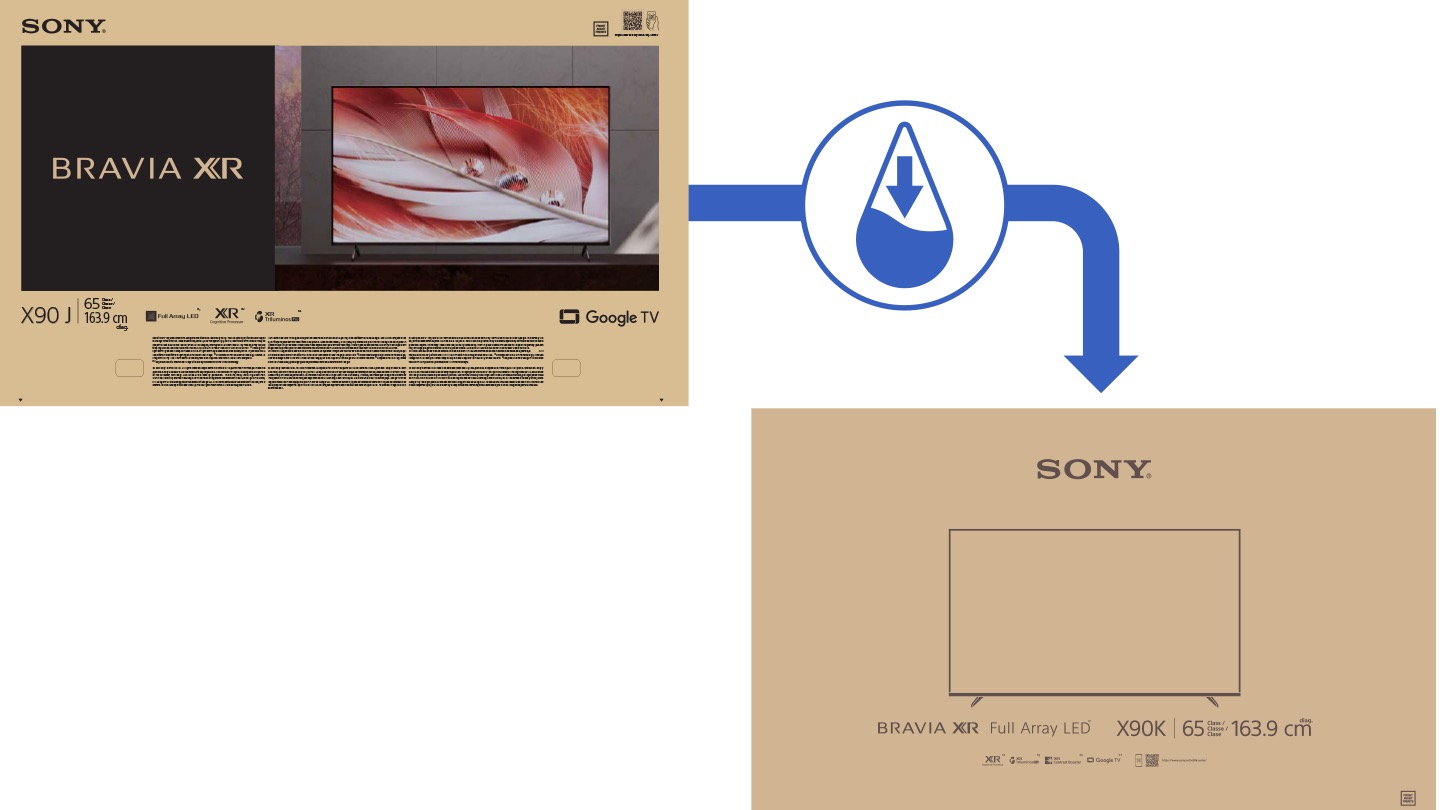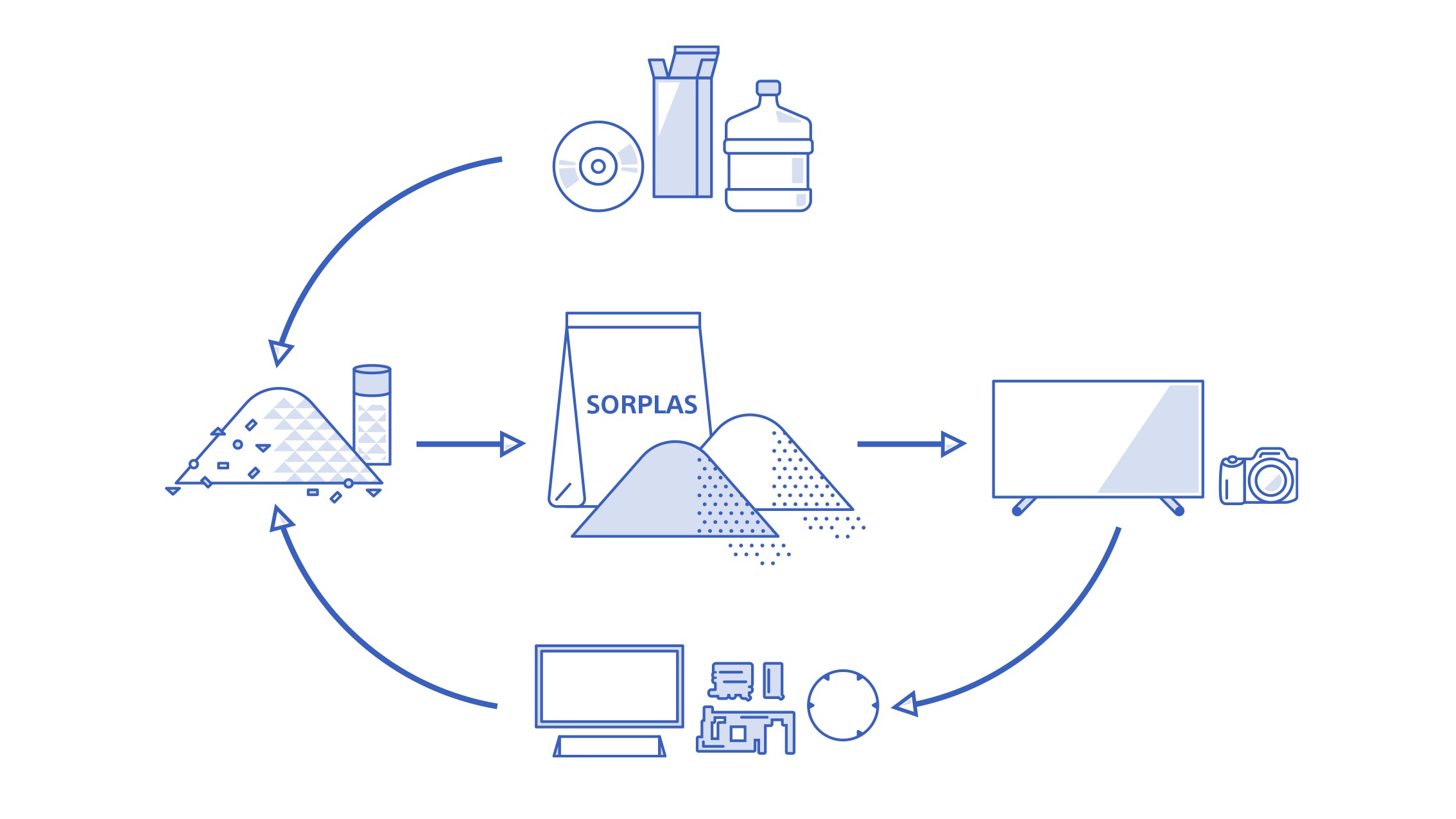Sony BRAVIA TVs: Sustainability never looked so good
How a TV can help reduce your environmental impact

Sony’s BRAVIA TVs are brilliant in terms of audio-visual performance, but they’re also setting new standards for their sustainability and eco credentials. They’re helping to reduce the impact on the planet by reducing energy consumption and with their use of renewable resources. Every aspect of the TV’s lifecycle – from production to shipping to day-to-day use by the viewer – has been rethought with a focus on sustainability. So not only are you getting a truly stunning TV, you’re buying one of the greenest devices of its kind.
Such are Sony’s gains in this area, that the corporation recently accelerated its target to achieve carbon neutrality by 10 years, from 2050 to 2040. Its BRAVIA TVs play a big part of that – here’s how.
Production: Less virgin plastic, less weight

Sony has completely revamped the BRAVIA TV production process without any loss in quality on the finished product. It even developed its own SORPLAS recycled plastics, which has allowed it to raise its use of recycled plastics in its products to 99 per cent. Sony’s BRAVIA TVs use SORPLAS for the rear cover, which is the largest part of the TV by area. This has reduced Sony’s overall use of virgin plastics by a staggering 60 per cent.
SORPLAS parts can be recycled many times without the material degrading too much. Thanks to the material’s long lifespan, the same parts can be reused many times over in many TVs to come, greatly reducing the volume of waste.
It’ll last the duration, too. While plastics for home appliances like TVs contain additives to add strength and fire retardancy, SORPLAS needs minimal additives to achieve the same properties. Which means each TV can be used for longer, again reducing waste.
And there’s no drop off in build quality. Because Sony controls every aspect of SORPLAS production, it can carefully select the right raw materials, adjust composition and tweak the process as needed to achieve its trademark high-quality finish that BRAVIA customers know and love.
Sony’s production techniques also make BRAVIA TVs lighter thanks to external air injection. Its precision moulding techniques ensure the panels remain durable and beautiful to behold while reducing the product’s weight. This in turn means the packaging can become slimmer, reducing plastic usage. And external air injection presses resin parts with air to eliminate warping and waste.
Transport: Less packaging, less plastic

Traditionally, TVs have packaging material above and below them, as well as on the left and right ends. But not with Sony BRAVIA TVs. Sony has used its decades of experience in global logistics to safely reduce the amount of packaging required, reducing it by 35 per cent volume. And that’s without compromising the safety of the BRAVIA TVs being transported.
Not only does this use less plastic, it also makes the packaging 10 per cent lighter. Which means each pallet can hold 1.3 more Sony BRAVIA TVs than previously, resulting in fewer trips. This has cut CO2 emissions per unit transported by approximately 15 per cent.
Every detail of the packaging has been considered, even down the amount of ink used. By no longer printing full colour images and changing to eco-friendly black ink only, Sony has reduced print ink usage by 90 per cent to use fewer resources. It has done so by simplifying the information presented, without compromising the packaging design and appeal nor its informative impact.
In use: Stunning picture quality with stunningly low energy use

Sony BRAVIA TVs are optimised for efficient energy use, meaning a lower environmental impact each and every day. How? Through the use of some highly sophisticated sensors…
Thanks to ambient light sensing, Sony BRAVIA TVs can optimise the screen brightness for your room’s lighting, improving the viewing experience while also reducing power consumption. With the help of BRAVIA CAM, they can detect when no one is watching and adjust accordingly, too. The accessory can detect viewer movement, and when it detects that no-one is in front of the TV, can dim the screen to minimise power consumption.
BRAVIA TVs also come with an innovative Power Saving mode which achieves the optimum balance between display brightness and power usage. That way, you get the best possible viewing experience while having less environmental impact and lowering your energy bill. It’s easy to activate, too – you can select Power Saving mode in the initial setup menu. Just activate it once and sit back and enjoy the action (and the savings). Want to change it at any point? No problem. You do so through the settings bar, which is activated with just one button press on the remote control.
Unique signal processing optimises every part of the picture, resulting in clean and vibrant images while also reducing energy usage.
Sony recently accelerated its target to achieve a carbon neutral footprint by 10 years, from 2050 to 2040, and plans to achieve 100 per cent renewable energy in its own operations by 2030. These innovations are just the start.
Get the What Hi-Fi? Newsletter
The latest hi-fi, home cinema and tech news, reviews, buying advice and deals, direct to your inbox.
What Hi-Fi?, founded in 1976, is the world's leading independent guide to buying and owning hi-fi and home entertainment products. Our comprehensive tests help you buy the very best for your money, with our advice sections giving you step-by-step information on how to get even more from your music and movies. Everything is tested by our dedicated team of in-house reviewers in our custom-built test rooms in London, Reading and Bath. Our coveted five-star rating and Awards are recognised all over the world as the ultimate seal of approval, so you can buy with absolute confidence.
-
nopiano This is an impressive commitment from Sony. However, hanging onto an existing telly for a bit longer is surely the greenest thing to do?Reply
My original Trinitron portable lasted at least 15 years, and a 2009 Sony 32” flatscreen was still in use until a couple of years ago.

